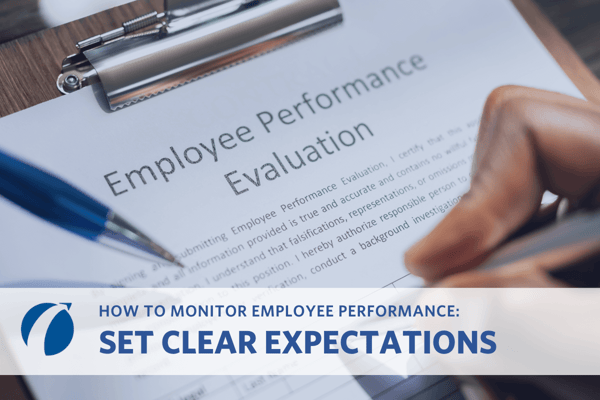Employee performance tracking allows management to maintain a living record of each employee’s actions, obstacles, and results. An effective performance-tracking strategy allows business leaders to give constructive feedback to employees to help them reach their full potential.
While 88% of organizations report having an employee tracking apparatus in place, according to research from Brandan Hall Group, a whopping 71% of them cite their tracking strategy as less than effective.
In this article, let’s discuss how to reconfigure your organization’s employee performance tracking strategy so that it brings out the best in everyone involved — from management to each employee on the team.
Benefits of Effective Performance Tracking
Learning how to keep track of employee performance is a key role for any business leader and has several important benefits.
For one, employee performance tracking allows for regular and open conversations between employees and upper management. These conversations should always include goal setting, the overcoming of obstacles, and ways to bring out employees’ strengths while minimizing weaknesses.
This “door is always open” approach fosters a company culture of fulfillment — not stuffiness. Plus, when employees feel heard and understood, morale improves and employee retention increases. Each worker becomes clearer about their role within the company. This boosts efficiency and promotes job satisfaction. But there’s more.
When employees know what they’re doing and feel good about doing it, they become motivated to improve. They have a need to rise within the organization, which helps the company as a whole achieve its goals.
When you get down to it, effective employee tracking is really about focusing on the decision-making process from management on down, and how to make the right decisions at the proper time to meet the challenges of the organization on a consistent basis.
How to Monitor Employee Performance: 7 Easy Steps
Far too many leaders use employee performance tracking to scrutinize team members. Instead of rewarding employees for the good they’ve done, performance reviews tear down, which can have a detrimental effect on morale.
This begs the question: What is an effective employee tracking strategy?
The following steps will help business leaders like you keep track of employee performance and set your team up for success.
1. Set Clear Expectations
 There should be no ambiguity as to how employees should be spending their day. Each team member should have set responsibilities and goals to work toward. Expectations should be clearly communicated so that employees can aim and hit their targets on a regular basis.
There should be no ambiguity as to how employees should be spending their day. Each team member should have set responsibilities and goals to work toward. Expectations should be clearly communicated so that employees can aim and hit their targets on a regular basis.
2. Choose Key Performance Indicators (KPIs)
Effective employee tracking identifies relevant KPIs for each role and department. KPIs should be simple to understand and easily measurable.
For example, sales may have a select number of leads to target and a benchmark of sales to hit each week, month, or quarter. On the other hand, marketing may have a certain number of projects to complete or an established metric of leads to attract.
3. Implement Performance Management Tools
A basic element of tracking employee performance is the recording of information.
A pen and notebook are probably not the most efficient methods of maintaining a record of each employee interaction. You’re welcome to use an Excel spreadsheet to track employee metrics and conversations, but you can supercharge your tracking with specialized performance management software.
The ideal software merges seamlessly with your existing business processes and platforms and provides instant access and visibility to employees and management company-wide. It should generate real-time reports so that management can gauge employee performance at any time. Employees, too, should be able to access and assess their own performance and improvements on a consistent basis.
The most important aspect when choosing a performance management platform is that it provides fluid communication between management and employees regularly, not only on a once-per-year basis.
4. Conduct Performance Evaluations
Having a performance management strategy in place is fruitless without effective performance reviews. Far too many managers view performance appraisals as something done to employees rather than making it a collaborative process.
Other managers ineffectively see themselves as indispensable coaches and mentors. The idea is that employees would not be able to manage to improve all on their own. These are not the best ways to appraise employee performance.
A better way to handle performance management is to schedule appraisals regularly. The process should be companywide, not just a task performed by HR. And make employees part of the process. This helps them take charge of their own decision-making. It also helps them be heard and understood, which is critical if you hope for star employees to stick around.
These performance reviews don’t have to be formal. Make them conversational, be frank, and reward employees when they score wins to have the biggest impact.
5. Encourage Continuous Improvement and Development
The conversations you have with employees can help identify where training may be needed and development opportunities exist. The conversation can continue with a customized plan for how improvements can be made. Celebrate achievements when appropriate and encourage future growth and career advancement.
6. Ensure Fairness and Objectivity
The conversations you have during the performance management process will be most effective in a company culture that fosters open and honest communication. Encourage employees to express their obstacles, ideas, and concerns.
7. Monitor and Adjust Performance Tracking Methods
Learning how to monitor employee performance is only half the battle. For your performance management strategy to have the maximum effect, action must be taken. Make it a point to evaluate the effectiveness of the performance-tracking methods. Make tweaks if necessary based on the feedback you get from team members and the results they produce.
Coaching Is the Key to Tracking Employee Performance
 Team leaders can make an impact by being both coaches and mentors. This does not mean telling employees they need to do better and sending them on their way.
Team leaders can make an impact by being both coaches and mentors. This does not mean telling employees they need to do better and sending them on their way.
The best coach provides feedback and sees obstacles from the employee’s point of view. This empathetic approach helps the employee feel understood, which makes them want to work harder and become more invested in their personal growth and the company’s success.
Here’s where GROW® Coaching can work wonders. The GROW Coaching model is a powerful framework designed to guide coaches in facilitating goal setting, exploring current reality, generating options, and establishing a clear way forward for individuals seeking personal and professional development.
GROW is closely tied to employee performance management as it provides a structured approach for business leaders to support their employees in setting meaningful goals, assessing their current performance, exploring avenues for improvement, and collaboratively establishing action plans to enhance individual and team performance.
By utilizing the GROW Coaching model, managers can effectively engage with employees, provide targeted feedback, and facilitate their growth and development within the performance management process.
When used regularly, GROW can improve morale, boost performance, and foster more open communication between team leaders and members.
Does Your Employee Tracking Strategy Need an Overhaul?
By now it should be clear that annual performance reviews are hardly effective. Nor is it helpful to dump feedback on employees without any kind of reciprocation. And while learning how to track employee performance in Excel is helpful, the act is wasted if the data recorded is not acted upon.
A better way is to make employees part of the appraisal process by encouraging open communication. Celebrate wins so that employees feel valued. Make them part of the decision-making process by using the GROW Coaching model.
When obstacles are presented, give employees a goal to work toward. Use empathy to identify the current reality in objective terms. Allow the employee to devise one or more options. Then, together, lay out a way forward that helps the employee and the company as a whole achieve the necessary objectives.





